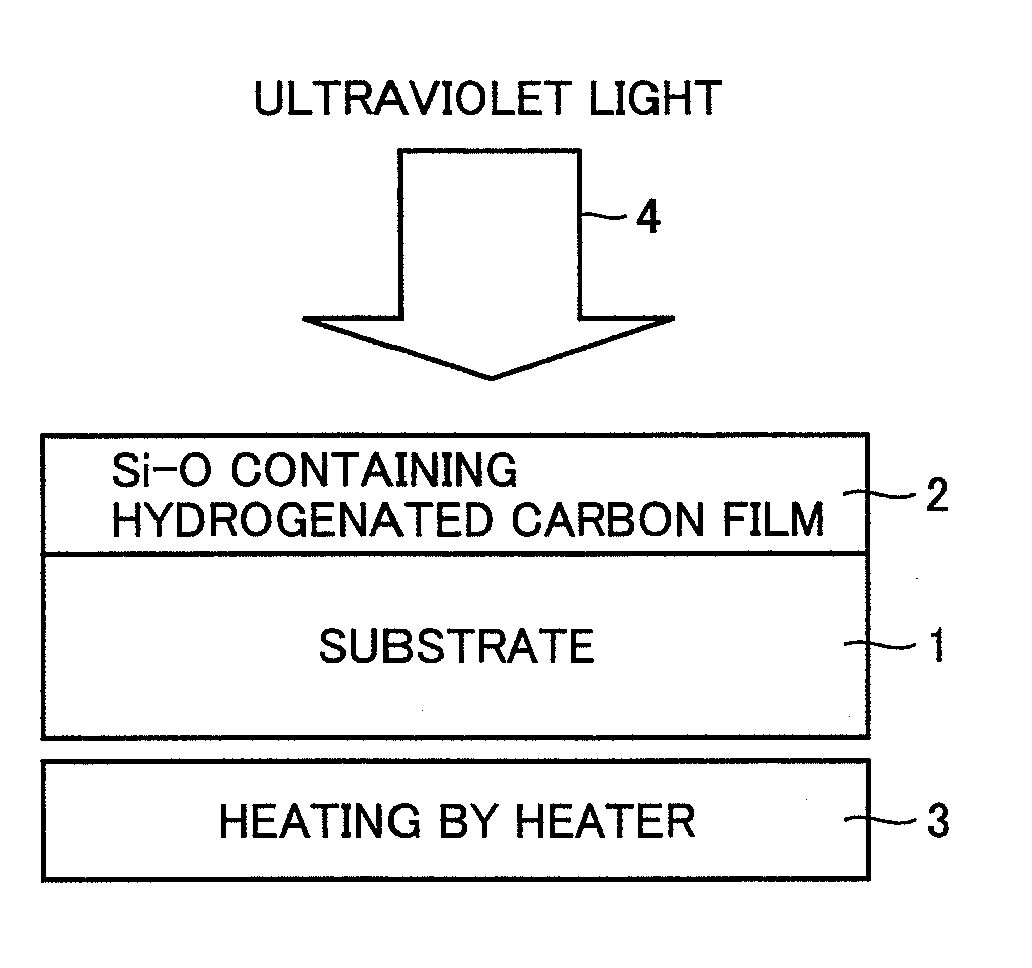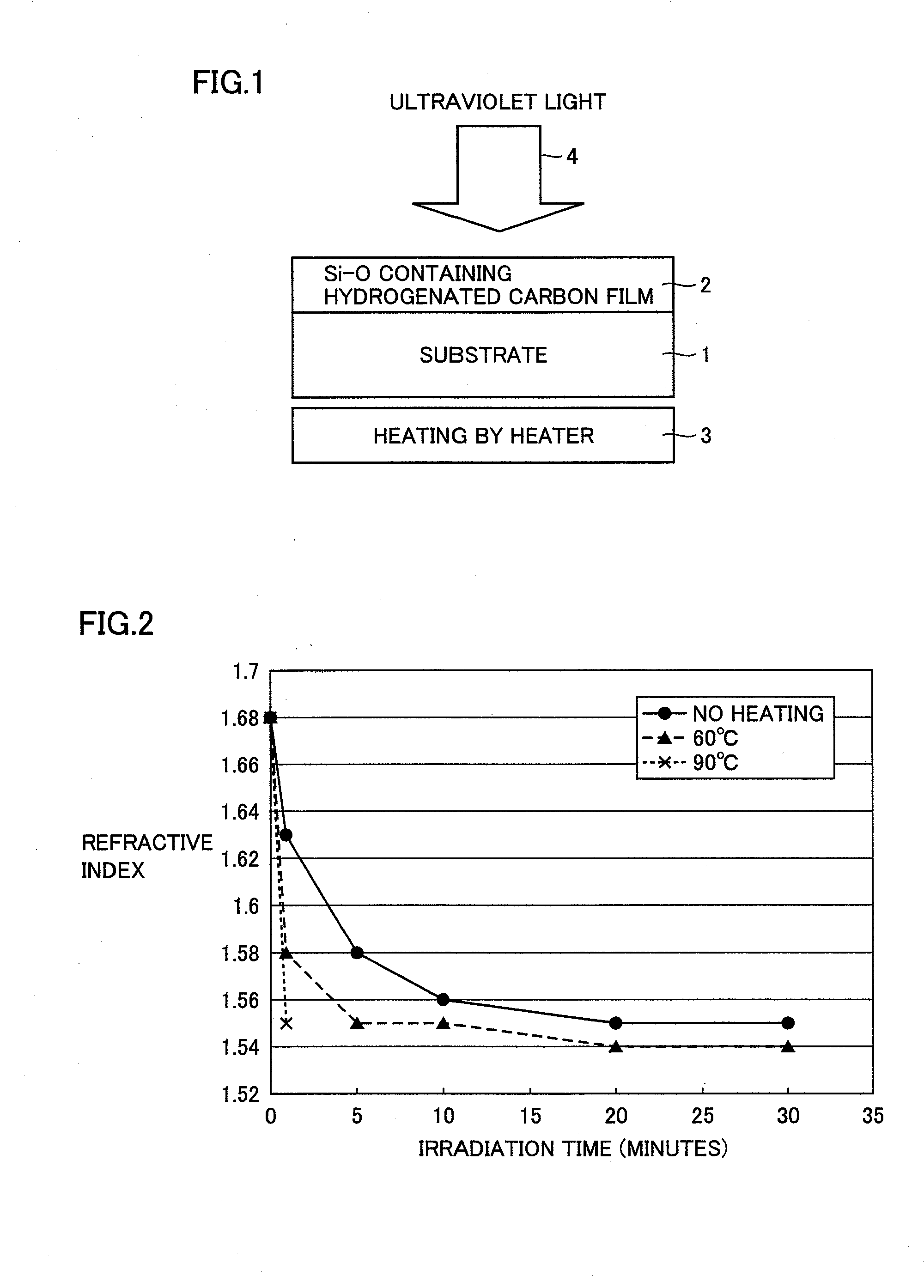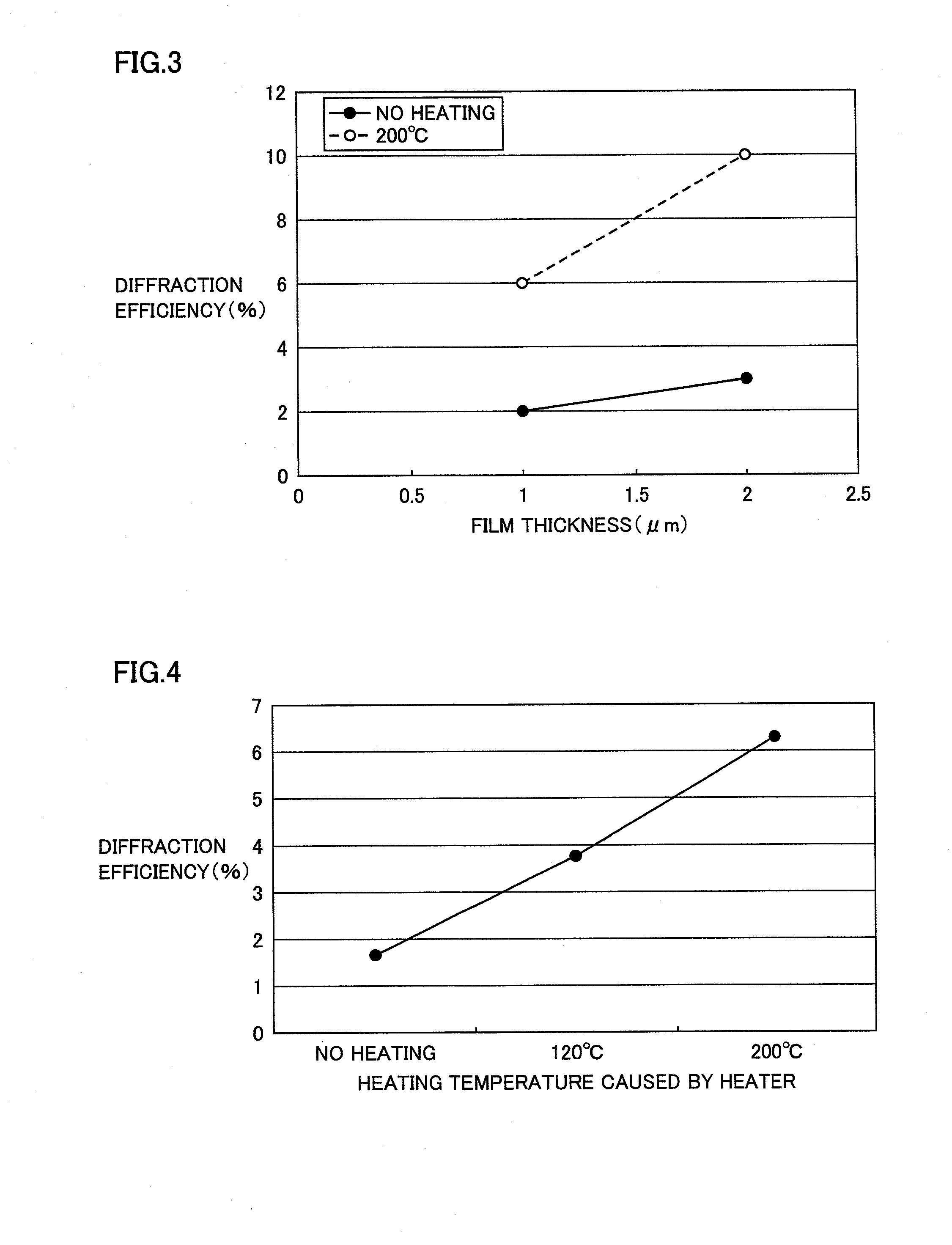Si-o containing hydrogenated carbon film, optical device including the same, and method for manufacturing the si-o containing hydrogenated carbon film and the optical device
a hydrogenated carbon film and si-o technology, applied in the field of transparent thin films, can solve the problems of difficult to greatly change the refractive index of conventional optical materials, and the design of refractive index modulated-type diffractive optical elements is greatly limited, so as to achieve favorable adaptability, high diffraction efficiency, and high transparency
- Summary
- Abstract
- Description
- Claims
- Application Information
AI Technical Summary
Benefits of technology
Problems solved by technology
Method used
Image
Examples
examples 1-3
[0164]Examples 1 and 2 show typical and preferable Si—O containing hydrogenated carbon films according to the present invention. In each of the Si—O containing hydrogenated carbon films in Examples 1, 2, it is found that the refractive index just after the film formation for light of 520 nm wavelength falls within the range for the condition of the present invention, i.e., from at least 1.56 to at most 1.76, that the extinction coefficient for light of 248 nm wavelength is in the more preferable range, i.e., less than 0.12 (see Table 2), and that the refractive index and the extinction coefficient are decreased by the energy beam (KrF excimer laser) irradiation (see Table 4). Further, in each of the films of Examples 1 and 2, the amount of refractive index change is in the more preferable range of at least 0.10 and at most 0.30 for the visible light range, and the extinction coefficient is not more than 0.005 resulting in sufficient transparency (see Table 4). Further, in each of Ex...
examples 4-7
[0172]Examples 4, 5 were similar to Example 3, except that the conditions for energy beam irradiation (types of applied laser) were changed (see Table 3). It is found that in each of Examples 4, 5 as well, the diffraction efficiency is high and the film unevenness is small as in Example 3 (see Table 3).
[0173]In Example 6, on the Si—O containing hydrogenated carbon film obtained under the same conditions for deposition as those in Example 1 (see Table 1), a gold mask was patterned by a lift-off method, and the refractive index of the film was modulated by exposure using synchrotron radiation (energy of 50 to 3000 eV) (see Table 3). The gold mask was then removed by etching, so that there was formed a refractive index modulated-type diffraction lens having a function of converging visible light.
[0174]In Example 7, a refractive index modulated-type diffractive optical element was fabricated with use of the film obtained under the same conditions for film formation as those for the Si—O...
example 10
[0179]The Si—O containing hydrogenated carbon film deposited under the conditions for film formation in Example 10 (see Table 1) has values close to the upper limit of the more preferable range in the present invention, as to the refractive index for the visible light range (wavelength of 520 nm) and the extinction coefficient for the ultraviolet light range (wavelength of 248 nm). More specifically, in the Si—O containing hydrogenated carbon film before the energy beam irradiation, the refractive index was 1.76, the extinction coefficient for the ultraviolet light range was 0.1, and the amount of refractive index change was 0.30 (see Table 2, Table 4).
PUM
| Property | Measurement | Unit |
|---|---|---|
| Temperature | aaaaa | aaaaa |
| Temperature | aaaaa | aaaaa |
| Thickness | aaaaa | aaaaa |
Abstract
Description
Claims
Application Information
 Login to View More
Login to View More - R&D
- Intellectual Property
- Life Sciences
- Materials
- Tech Scout
- Unparalleled Data Quality
- Higher Quality Content
- 60% Fewer Hallucinations
Browse by: Latest US Patents, China's latest patents, Technical Efficacy Thesaurus, Application Domain, Technology Topic, Popular Technical Reports.
© 2025 PatSnap. All rights reserved.Legal|Privacy policy|Modern Slavery Act Transparency Statement|Sitemap|About US| Contact US: help@patsnap.com



